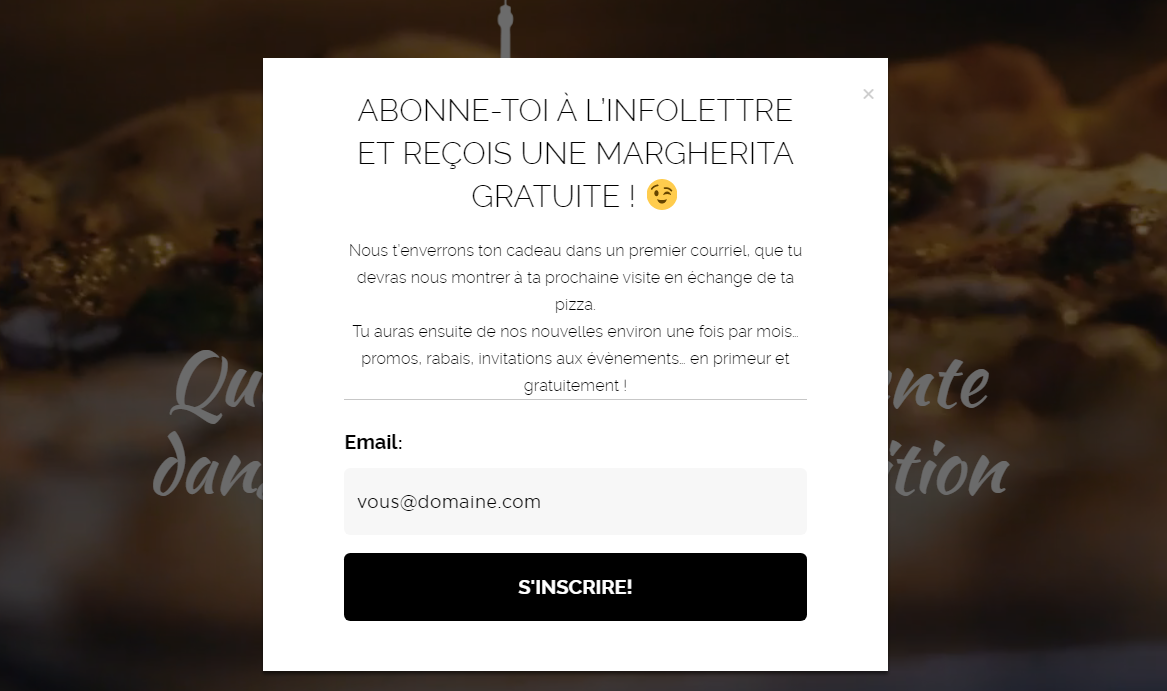You may have already heard of marketing automation. The topic is increasingly being discussed. So much so that I’ve identified it as one of the email marketing trends to look out for in 2019.
You might be saying: “Sure, but how can marketing automation really help my business?” Well, I hope the concrete examples outlined in this article will convince you that it’s high time you adopted marketing automation.
What is marketing automation?
Firstly, let’s make sure we’re on the same wavelength. Here’s what I mean by marketing automation.
As its name suggests, it’s about automating certain marketing actions. More specifically in our case, it’s about automating emails based on conditions and actions taken within a given scenario.
Want to send a series of emails to people signing up to your email list? Or to send a greeting card to your contacts on their birthday? Want to effortlessly obtain the express consent of your contacts? All of that is possible with marketing automation.
Once you’ve set up the parameters for a given scenario, everything is done automatically!
Why you should take an interest in it
Marketing automation scenarios will help increase your sales and strengthen customer loyalty. Automating certain emails allows you to communicate more frequently and effectively with your contacts.
Marketing automation will also help you save a lot of time. Once you’ve done the work, the system works on its own, giving you time to focus on your many other tasks.
Welcome emails
The most widespread use of marketing automation is welcome emails. It’s also the type of automation action I suggest you try, if you’re just starting out.
A welcome email is an automated message sent to someone who has just joined your subscriber list. Here are a few situations that could trigger a welcome email:
- A visitor on your website completes a form to receive your newsletter
- A customer makes a purchase online
- A customer makes a purchase in-store
- A prospective customer completes a form to receive free content
- Someone enters a contest (and consents to receiving emails from you)
It can be a single welcome email or a series of emails. In this case, the first email is usually sent immediately after the person joins, and the subsequent emails in the series are sent at regular intervals (e.g. email #2, five days later; email #3, ten days later; and so on).
Did you know that, on average, welcome emails are the most read and those that generate the most revenue? It’s not that surprising if you think about it. People have just interacted with your business (they joined your list or became a customer), so they’ll open the email you send them. Don’t wait until your next monthly newsletter to communicate with new subscribers—you’ll miss out on a golden opportunity!
Concrete example: Following up on an in-store purchase
I recently purchased several shirts in a store. At the cash, I was asked if I wanted to join the VIP Club. I asked for more details, and the employee explained: “You just subscribe with your email address and you’ll automatically receive exclusive offers each month. It’s free!” If I’d simply been asked for my email address, I’d have probably said no. But joining the VIP Club? Sure, why not!
I left the shop, and a few minutes later I noticed a message in my inbox: “Welcome to the VIP Club.” When I opened the email, I saw this offer: “Come back to see us within the next 30 days and get 15% off your purchase.” Awesome, right? It’s said that email marketing is the best way to strengthen customer loyalty. And that’s how you do it!
Ever had a similar experience? Think you could implement a similar strategy for your business?
Concrete example: A creative restaurant!
This pizzeria in Chicoutimi, Quebec is efficient at turning its website visitors into email subscribers. The restaurant is willing to give something in exchange for an email address, which is an excellent business practice. The call to action “Get a free pizza when you subscribe to our newsletter” works marvellously!

It’s also important to describe exactly what will happen: “You’ll immediately receive an email with your discount coupon. You’ll then get news from us about once a month.” It’s clear, and we know what to expect.
Obviously, the email containing the discount coupon (for a free pizza), sent to people who subscribe to the newsletter, is an automated email. It’s a simple marketing automation scenario with a trigger (completing a subscription form) and an action (sending a welcome email).
Can you offer a gift in exchange for an email address? Know how to go about automating the process?
Concrete example: Offering a 100% automated online course
At Cyberimpact, we offer new subscribers an intensive email marketing course. It actually comprises five lessons over five days. Those interested simply need to enter their email in the registration form, and they’ll automatically receive the five emails at 24-hour intervals. The emails contain the lessons and links to additional information. It’s in our best interest to train our users. The better they become at email marketing, the more they’ll use our platform!
Think you could also train your customers via a series of automated emails? Or perhaps, improve their experience by sharing additional information (e.g. videos demonstrating how to use a product they just purchased)?
Other triggers…
Of course, marketing automation isn’t just about welcome emails. There are other types of automation you can implement and many other situations that can trigger an email.
Birthday emails
I love my osteopath! Whenever I have the slightest problem, she works her magic and makes it all better. Something else she does really well is sending me an email on my birthday.
She has all her clients’ birthdays (she asks for it in the health form all new clients fill in). She can therefore send an automated email on each person’s special day. She simply prepares a generic but friendly email template and sets the parameters… that’s it! All her clients will receive a charming email wishing them a happy birthday on the right day. Then, once a year, all she needs to do is modify her email template to avoid sending a client two identical emails.
A birthday email is an excellent way to renew a business relationship with a customer. People appreciate the gesture. You can even include a purchase incentive (e.g. an exclusive offer or discount coupon).
Perhaps asking your customers for their birthday isn’t relevant to your business. But if it is, why not implement this automation strategy?
Email opened or not. Link clicked or not.
When you send an email manually (standard, not automated), you can program what I call automatic follow-ups. In other words, you can set parameters to send one or more emails to people based on how they interact with the first email. This allows you to target:
- People who opened your email
- People who didn’t open your email
- People who clicked on a link in your email
- People who didn’t click on a link in your email
Sounds complicated? Here’s an example: Let’s say you want to organize a networking event. I send a first email to all my customers to invite them. In this email, there’s a link that people must click on to register.
Then, I’ll set up an email to be sent immediately to anyone who clicks on the registration link. This email thanks them for registering, confirms their registration and provides them with important details, such as the date, time and location.
I’ll also set up an email that will be sent to people who haven’t opened my first email invitation, 5 days after it was sent. There are many reasons why someone may not have opened my email (too busy, out of the office, subject didn’t catch their attention, etc.). But that doesn’t mean the person isn’t interested in my event. Based on my experience, a second email works very well and can suddenly generate more registrations. Tip: change the email subject to avoid sending exactly the same message twice.
Lastly, I’ll set up a final email to be sent a few days prior to the event to anyone who opened one of my two invitation emails but didn’t click on the registration link. These people demonstrated interest but didn’t make a commitment. This last email may convince a few of them.
In this scenario, I prepared four emails. The advantage of automation is that I can program all of these emails at once and then move on to something else. That way, I’m sure to maximize the number of participants at my event. Giving you some ideas?
Your turn!
I hope this article has helped demystify the concept of marketing automation and convinced you of its benefits. This technology is now within reach for businesses of all sizes, even the smallest! So, start communicating better and more frequently with your contacts while saving a lot of time.
If you’re looking for software to manage your new marketing automation scenarios, Cyberimpact is for you! We have a robust marketing automation module featuring several pre-set scenarios that will make the task much easier for you. Create your free account.
What type of automation will you start with?

Thanks for sharing email automation related blog about How to use marketing automation